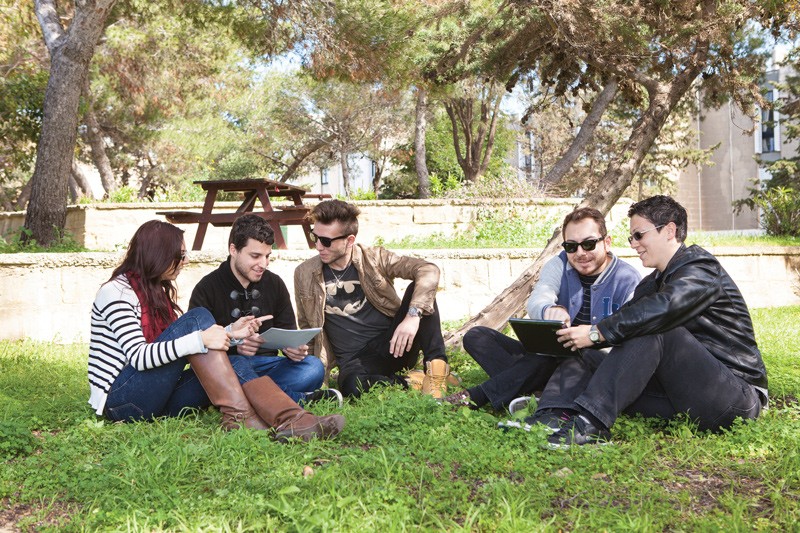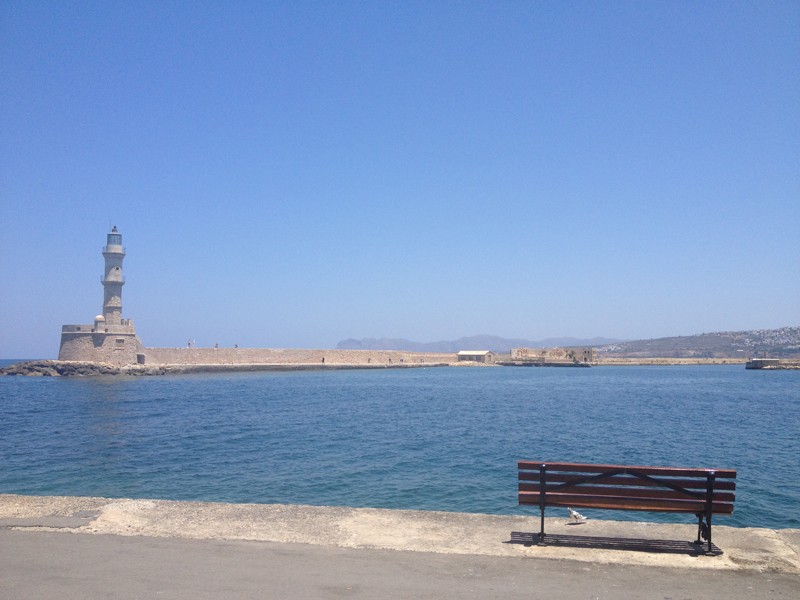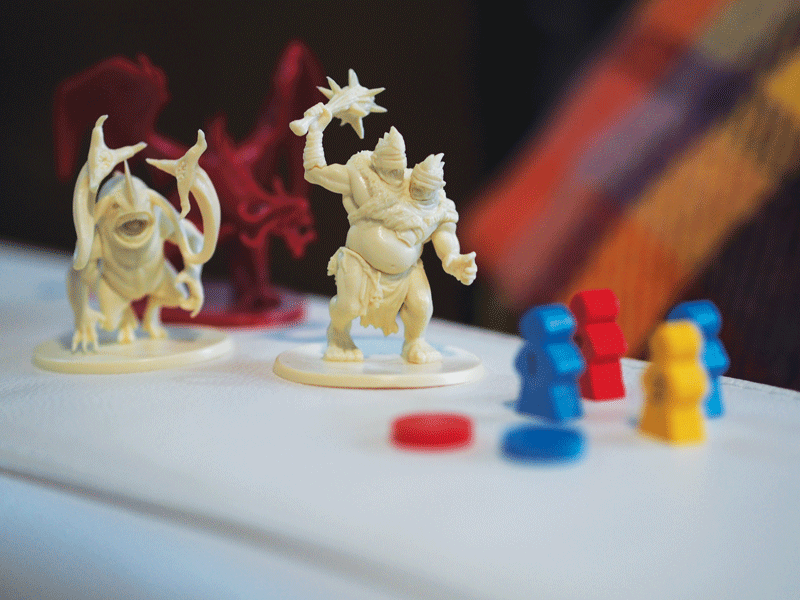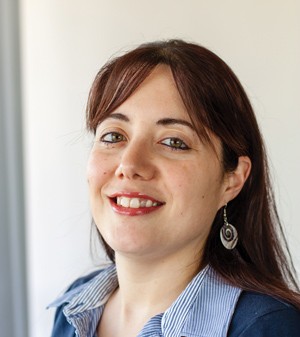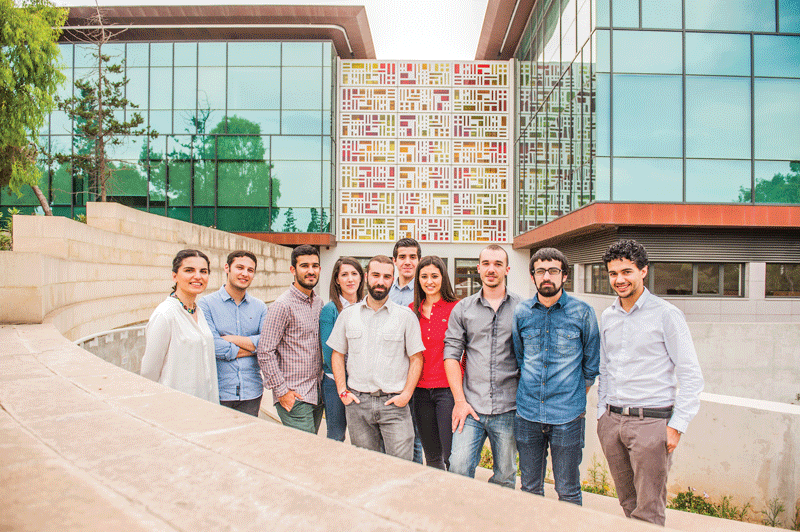Haven’t We Had Enough of Gender Stereotypes?
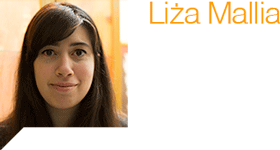 An essay by linguist Deborah Cameron about gender misconceptions really hit home hard. It made me ask, why do we let gender role restrictions influence our identity. Continue reading
An essay by linguist Deborah Cameron about gender misconceptions really hit home hard. It made me ask, why do we let gender role restrictions influence our identity. Continue reading
Translating Education
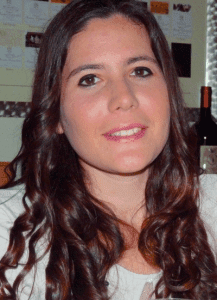
Research by Jana Galea
Language,translation,and education: three hot topics on the Maltese Islands.
Malta invests heavily in education with a big chunk of its budget, strength, and efforts invested to elevate standards. Malta is also largely bilingual. This is even reflected in Malta’s constitution which places both Maltese and English as official languages. Yet, deciding on which language to use to teach children is a thorn in the side of Maltese educational institutions. A viable bilingual policy is still needed.
The European Union places great importance on national languages. This policy elevates the importance of all EU languages no matter the country’s size. The EU releases its documents in each language—a boon for Maltese translation studies. However, there is a clear lacuna in terminology and glossaries for education documents.
Jana Galea (supervised by Prof. Anthony Aquilina) translated an international publication on education into Maltese and compiled an accompanying glossary of educational terms. Translators have to adopt the role of terminologists (professionals who research and locate information or past publications to ensure accuracy and consistency in the usage of terms) when working with specialised terminology, a time consuming activity due to the lack of standardised terms. A glossary of educational terms facilitates translation by providing an easy-to-access reference tool that ensures consistent terminology in translations.
The research tries to show that Maltese and English should not be seen as rivals constantly trying to outdo each other. The Maltese language is part of the country’s unique identity, its most democratic tool, and an official EU language. It is strong and continuously growing, as Prof. Manwel Mifsud stated ‘Ilsien żgħir imma sħiħ, ilsien Semitiku imma Ewropew, ħaj u dinamiku’ (A small but complete language, a Semitic language but European, alive and dynamic). Then there is the English language which is Malta’s main linguistic link to the rest of the world and the carrier of scientific, technological, and informational developments—both languages enrich the Maltese Islands.
This research was performed as part of a Master of Arts in Translation at the Faculty of Arts, University of Malta. It is partially funded by STEPS (the Strategic Educational Pathways Scholarship—Malta). This scholarship is part-financed by the European Union—European Social Fund (ESF) under Operational Programme II—Cohesion Policy 2007–2013, ‘Empowering People for More Jobs and a Better Quality of Life’.
Social Wellbeing Policy at University?
University can be incredibly stressful. Staff perform high level work with plenty of academic responsibilities, while balancing a private life and leisure time. The number of students at University is rising every year. For academic and support staff this means a more intensive workload, pressure, and stress. For students it is the pressure of attaining good results, maintaining relationships, and other social and emotional wellbeing issues, such as coping with peer pressure, struggling with deadlines, and worries about the future. Numerous studies suggest that examinations negatively impact on student health and wellbeing. Some coping strategies and time management programmes have evolved at the University of Malta, for example by the University Chaplaincy. Such well-meaning initiatives are good and do good, but tend to happen sporadically and around examination time.
Many University of Malta students balance multiple identities. They often fall outside the typical demographic of an 18-year-old sixth form school leaver. Our students come from diverse socio-economic backgrounds, and may be studying full-time or part-time, with a variety of life roles: mature students, women with care responsibilities, persons challenged by disability or facing problems due to sexual orientation. Whatever the situation in life, each diverse identity places increased demands upon the students’ time and private life. These demands influence their University experiences, study perceptions, and learning style. Their peers might treat them differently due to their background.
“A social wellbeing policy will help foster confidence in its approach to academic learning, and to eliminate discrimination in favour of a more inclusive learning environment”
Besides worries about assignment deadlines and writing exams, many students are also in employment. I am not sure this trend is in line with University of Malta regulations, nevertheless, that is the situation. Students also worry about future prospects with no guarantee of secure employment after finishing their studies. So it is not only academic concerns that come in the way of student social wellbeing, and these may lead to high levels of stress, anxiety or frustration, depressed mood, difficulties with time management, procrastination, poor concentration, withdrawal from friends or family, or physical symptoms such as headaches, sleep problems, and exhaustion. University life presents numerous stress factors that may trigger off mental health difficulties.
Students experiencing stress are normally recommended psychological intervention and counselling, which may be beneficial for extremely stressed students. However, research suggests that physical activity helps improve mental health and wellbeing. The University of Malta, through its Work Resources Fund, promotes cycling through the Green Travel Plan. The initiative is more about sustainability and the environment, apart from a solution to the parking problem. However, cycling does improve our mental health and wellbeing, and is a free personal de-stressor by taking our mind off work or study, and leads to healthier lifestyle choices. 
A social wellbeing policy for University will help foster confidence in its approach to academic learning, and to eliminate discrimination in favour of a more inclusive learning environment. Indeed, the principles of equality and diversity such as gender or disability are essential for a true understanding of social wellbeing, and these same principles need to be included in our University’s policy document and implemented in practice. Diversity in a dynamic, intellectual environment enriches professional and educational experiences for both staff and students.
Diversity on campus is needed and important for a healthy University. Internationally, social wellbeing on campus is being promoted through an organisational structure embedded into the ethos, culture, policies, and daily practices of a university. A social wellbeing policy includes an improved occupational health and safety system, and a commitment to address mental wellbeing, physical inactivity, unhealthy eating and substance misuse. The University needs constant commitment to positively influence the life and work of all staff and students.
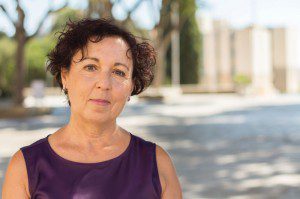
The University is encouraged to guard the integrity of its communication system. Collaboration and open communication fosters conversations and relationships necessary to bring about social wellbeing. The communication process needs to be trusted and confidential for team spirit and social wellbeing. For instance, I would strongly argue for an email policy that discourages unnecessary use of bcc in emails, as the practice of not telling the original addressee is unethical and downright deceitful.
The University of Malta could establish itself as a national contact point on the European Network for Health Promoting Universities (see www.eurohpu.aau.dk). It would commit the University to place social wellbeing high on its policy agenda. A working document published by the World Health Organisation Regional Office for Europe provides guidance on how to set up and develop a health-promoting university project, which would enhance and protect the social wellbeing of all staff and students.
Finally, I would also suggest an exploratory research study about aspects of university life, stress factors in teaching and learning activities, and how these impact on individual experiences. The aim is to understand the general quality of life, and how this can be improved for an informed social wellbeing policy document at the University of Malta.
This article is based on a paper Camilleri-Cassar presented at a seminar organised by the Faculty for Social Wellbeing in October 2013.
Read more here:
– Carroll, A. (2011) ‘Exploring the link between equality, diversity and wellbeing.’ In Marshall, L. and Morris, C. (eds) Taking Wellbeing Forward in higher education: reflections on theory and practice, University of Brighton Press.
– Hagarthy, D. and Currie, J. (2012) ‘The Exercise Class Experience: an opportunity to promote student wellbeing during the HSC’, Journal of Student Wellbeing, vol. 5(2):1-17.
– Hall, C., Ramm, J. and Jeffery, A. (2011) ‘Developing the University of Brighton as a Health Promoting University: the story so far.’ In Marshall, L. and Morris, C. (eds) Taking Wellbeing Forward in higher education: reflections on theory and practice, University of Brighton Press.
– UniHealth 2020: Mission Statement, www.eurohpu.aau.dk
The Mediterranean: a history to be shared
Professor Mostafa Hassani Idrissi will be one of the keynote speakers at the First Annual International Conference on Cultural Relations in Europe and in the Mediterranean, organised by the Valletta 2018 Foundation with the support of the University of Malta, which will be held at the Valletta Campus on 4th and 5th of September.
“Give a Damn, use that Cam!”
– Amateur Short Film Competition for University Students
Rise of the Ancients
Over the last two decades a relatively new sort of board gaming has emerged which you might not have heard about. ‘Hobby’ or ‘modern’ board gaming is sweeping across the world.
In 1995 The Settlers of Catan by Klaus Teuber changed everything. This is the game that made many Americans realise that there is more to board games than Cluedo and Scrabble. It was family friendly, easy to get into, had a lovely trading mechanic and modular board which changed every time you played it.
Isn’t 1995 late? The ‘Spiel des Jahres’ award (basically the Oscars of Board Games) was founded in 1978. In Germany this genre of board games had been popular long before Settlers of Catan broke the monopoly of Monopoly in the US. Board games go back much further. In 2200 bc, in China, Go had already been invented.
German-style games, or eurogames, are generally regarded as one half of the two over-arching mega-genres in modern board gaming. These sort of games generally feature less luck, a more direct strategy, and less direct player interaction. Winning conditions involve collecting victory points and the design favours symbols over text.
The other half is the American-style, sometimes referred to as ‘Ameritrash’. These are generally the opposite style. War, fighting, killing, rolling piles and piles of dice (therefore luck), and player elimination.
Common themes and styles in American-style games include dungeon crawling (Descent, Claustrophobia), the American Civil War (Battle Cry), and World War II (Memoir 44).
German-style games, on the other hand, tend to have more ‘European’ cultural influences. For example, colonisation of the Americas or medieval farming are common themes (Archipelago, Puerto Rico), as are diplomacy and intrigue at the time of the Inquisition or gaining the King’s favour (Il Vecchio, Caylus).
American-style games sound similar to miniature wargaming and tabletop role-playing games (RPGs), and are definitely inspired by these earlier games. However, board games are different. A board game generally comes in a box which contains everything you need to play with a number of players and most of the time is meant to be played in one sitting. RPGs and wargaming do not follow these rules.
Interestingly, American and German-style games developed in more or less the same period of time in two completely different cultures. This is comparable to the development of the Japanese RPG and the Western RPG in video games.
And today?
Board games are experiencing a golden age. If you had come into the hobby a mere five years ago, the picture was simple. But the worldwide Indie revolution and crowd-funding has also hit board games.
Until a few years ago a few recognisable, high profile game publishers dominated the market. Euro and American style games were easily separated. Now, board games are becoming less and less of a niche hobby. New designers are creating games that combine many different influences from past games. The lines are being blurred. More experimental games and publishers are starting to pop up thanks to crowd-funding, and virtually anyone can publish a game.
In Malta, one of the first locally developed modern boardgames will be published internationally next year — watch this magazine — and others are in development. Exciting times.
David Chircop (and Yannick Massa) topped the Board Game Geek Hotness List for a week and won Best Board Game award at Malta’s first Global Game Jam held on January 24–26, 2014 at the Institute of Digital Games, UoM. See http://maltagamejam.com for next year’s Game Jam or take a course at the Institute http://game.edu.mt to learn how to make your own game. This article forms part of The Gaming Issue.

Bridging the Gap
My career has taken me from industry to research, with a 3-year stint as a business consultant, and EU and local fund evaluator for R&D projects. Now I am back at university managing the consultancy, laboratory services, and training business within the Malta University Consulting Ltd (MUC). The University of Malta (UoM) encourages its staff to engage in activities like these through the MUC. Through this article I hope to encourage UoM staff and outside entities to meet us to talk about their opportunities.
The MUC is one of the subsidiary companies of the UoM that we are revamping. Our new office is located on Campus in the same building as the Knowledge Transfer Office and the Business Incubator TakeOff. Our doors are always open for both academic and technical staff, as well as industry and public entities.
Having carried out research at the UoM and visited foreign research organisations, I have witnessed the UoM develop into a hub of knowledge, resources, and excellence competitive with research institutes abroad. Staff members have expertise in a wide range of areas and can offer technical, educational, business, and scientific advice. Expertise ranges from environment and energy, to sciences, education, engineering, ICT, finance, health sciences, and other areas. The quality of the work is highly professional and competes very well with international levels.
The MUC’s role is to facilitate staff by taking care of the administrative, financial, legal and marketing issues related to networking with industry, allowing them to do what they are best at: deliver the expertise efficiently. Staff and entities are given support to find opportunities and set up teams of experts when projects are multidisciplinary. Projects are managed from their inception to closure — from the preparation of proposals and submission of quotes to chasing deliverables and deadlines. The MUC helps with contract negotiation and legal document preparation for the necessary agreements. It provides insurance coverage and manages the issuing of invoices, and securing and processing payments.
Over the past nine months, with my new role at the MUC, we have been working with a number of local public entities and SMEs (Small to Medium Enterprises) on a number of projects. We have worked on small one-off services that require biological, physical, mechanical, and electrical laboratory tests and larger longer-term projects such as chemical tests with the pharmaceutical industry. Contract research and consultancy projects are generally bigger projects involving teams of experts. We have been involved in projects in the telecommunications, ICT, education, renewable energy, and electronics industries. We also organise Continuous Professional Development (CPD) courses such as digital gaming, Horizon 2020 EU funding, and e-marketing.
We can do much more than we are doing. Our vision is to keep growing slowly but steadily involving other members of staff and other entities. Do contact us — our doors are always open.
Dr Ing. Alexia Pace Kiomall can be contacted on alexia.pacekiomall@muhc.com.mt or 2340 8903
Students for Research
Education is a word we are constantly bombarded with. After sitting for hundreds of exams, having read thousands of notes, spent endless nights fighting with coffee machines and sticky notes, you probably know the hardships of our education system. However, education is much more than books and lectures.
Education is a way of life. It changes us and can bring out our potential. Our University is the place we all come to learn, work, and ultimately spend most our time. Be it students, staff members, academics, or researchers, it is of utmost importance for us all to be in line with why we are all here, to nurture education and develop our society’s future.
The University has been growing rapidly in the past decade. Construction is ongoing, labs are being renovated, and the number of postgraduate courses and doctorates has grown exponentially. Naturally, research has spiked up too, and the UoM is also spearheading a few world-class projects.
Why am I putting so much importance on research? The answer is simple. Without research Malta can never make a leap forward to improve our quality of life. The main aim of research is always that of identifying and exploring new knowledge that will ultimately make our world a better place.
Locally, researchers are not just donning white lab coats. Maltese researchers are diving deep into Mediterranean waters to explore native aquatic species, some are crawling face down in garigue environments to investigate local flora and fauna, while others are breaking new grounds to find the Maltese genetic components responsible for cancer and other deadly diseases.
Students perform research for their dissertations (see the student section of Think). This is when a student will first experience hands-on research. A university supported to conduct top research is necessary to give students more real-world research opportunities. Encouraging a research mentality within the early stages of the University experience is essential to foster a lifetime commitment towards our alma mater.
Unfortunately, the biggest obstacle in research is funding. This problem is worldwide. But whilst other countries have already made substantial efforts to fight this problem, locally we have just started to get the ball rolling to instill the much needed awareness and culture around research funding.
Investing in research is essential and we are seeing an initial good response from society. People are slowly starting to realise that through research we are not only creating a hope for future generations, but we are also aiding the education of our children and helping our country’s socio-economic well-being. In the past year we have managed to raise important funds for cancer and kidney research, and other important causes.
The University Research Trust’s latest initiative, in collaboration with the KSU, is a project whereby students can directly donate funds towards research within their faculties. Dubbed as the UoM Caution Money Scheme, this initiative lets final year students from the Faculties of Engineering, ICT and Sciences donate their laboratory caution money towards research projects and equipment in their faculties. Ten students, who decided to set an example for their peers to follow, launched this scheme during an annual KSU event, showing that everyone can contribute towards research at University.
We are now encouraging all final year students from these faculties to follow suit and also contribute towards research. Malcolm Zammit, one of the students who already donated the money appealed to his peers saying, ‘This small deposit we had left in our first year is negligible when compared to the amount that the University has invested in all of us. Today, I feel it my natural duty to give something small back to this place which has given me so much.’
The initiative has also encouraged other student organisations to donate. ELSA has just given the Research Trust some funds for University research. These initiatives are all helping towards fostering more awareness and funding so that together we can continue leaving a tangible impact on our campus and society.
Photography by Sean Mallia
Mario Cachia is the Campaign Officer of the RIDT, which is the University’s Research Trust aimed towards fostering awareness and fundraising for high-calibre local research. More information on how to participate in the UoM Caution Money Scheme will be published shortly. Please visit our website www.ridt.eu to donate online, and our Facebook page www.facebook.com/RIDTMalta for the latest events and initiatives.
Plan to Live
Can planning really sustain us? Should we plan to survive or is project planning simply there to overcome obstacles when we are faced with them? Dr Rebecca Dalli Gonzi writes about a group of project management M.Sc. students who she asked to prepare a project plan. During their project students suddenly faced an unexpected turn of events. They were asked to counteract the problem and face the challenges that they encountered. This is their story
Planning is constant action; it never stops. If you are moving to a new house or country, you probably know what this means. Planning is pervasive, but can it get out of hand? What does planning a gap year mean? Do you plan every single minor detail or do you let loose to enjoy some spontaneity? If, for example, a couple is turning a shell apartment into a home it would involve a lot of tasks, planning leave in advance, and chasing the architect. They just might give up when a book shelf cannot get through the door. If we can plan to live, how would it help us get out of a rut when things really go wrong?
Managing your life is not that different to managing a project. When you manage a project you need a flexible plan that can meet the unplanned changing demands that life hurls at you. We live in a time when the efficiency of a service or project is based upon its ability to meet change or increasing demands. Would a project plan ensure that your plans run smoothly even when your life path starts changing its course?
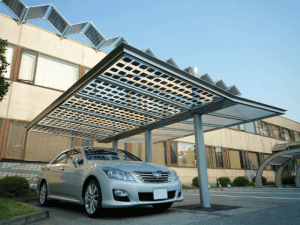
Project managers cannot always foresee every eventuality when planning and managing a project. Once a project is underway many unexpected events can affect project target dates and resources. Planning at its simplest would mean better management and more knowledge, while at its most complex, it could mean more peace of mind. Trying to plan a complex project without a plan is like trying to cross the Pacific Ocean without a navigation system.
Positioning your project within vulnerable situations during the initial planning stages means your team can generate ideas develop creative solutions, and have a solid idea about the resources they have, time schedules they need to stick to, and budgets. This is exactly what helped Rita Sant manage change during an unexpected turn of events as soon as her project was launched.
Plan for Health
Sant designed a healthcare concept for homebound patients called ‘SMART At HOME’. It offered a combination of home health and community based services. She carried out in-depth research to come up with the right strategy, marketing analysis, project milestones, and deployment plan. Things seemed perfect on paper. Yet she ran into a game changer. Shortly after the project was launched, a competing company called HomesforYou was set up. It threatened to put her project on hold. HomesforYou offered similar concepts that which her project sponsors had in mind. However, Rita and her team had engineered some alternate options before the actual launch to keep the company ahead of the competition. Putting the project in a vulnerable position through an in-depth SWOT analysis (analysis of the strengths, weakness, opportunities, and threats of a project) helped show the project sponsors where their focus should be. Her focus was primarily on selecting target markets and helping attract new customers. Sant was able to direct her team towards the right networks. She identified gaps in the south of Malta, and worked directly with doctors and insurance providers to bring in new customers.

Sometimes, we are so taken up by our projects that we fail to see the obvious, to question the challenges whilst assuming we have already envisaged the end result. Project planning helps identify areas of weakness through tools like PESTEL analysis (analysis of political, economic, social, technological, environmental and legal factors that impact business), SWOT analysis, performance testing to verify strategies (plan workability), design of project think tanks, project recovery planning, contingency planning, and risk analysis (amongst other research areas). There is a lot of research behind project management.
Plan for Energy
Areas in the project that could have been overlooked suddenly become crucial. Sometimes being realistic is crucial to success. Another student, Joseph Borda, immediately received a notice that should his project exceed the proposed budgets the project sponsors would incur heavy fines. Borda was clear with his ideas from the start. Developing the power engineering workforce for the future is what he had in mind. His design of a solar panel array on the Malta International Airport car park would mean the generation of just enough energy to supply the airport. Proper time scheduling ensured that the project would be delivered within the specified time-frames. This could only work together with a proper team organisational structure and pre-designed hierarchical task network, which is the approach to automated planning where dependency among actions is given in the form of a network. A well-researched proposal helped Borda envisage proper scheduling to ensure the project was delivered within the specified time objectives, together with the team organisation structure and task hierarchies required to complete the task in time. Could a project schedule really have helped Borda stick to his time-frames? A project’s life or death hinges on its delivery date. Incurring fines meant that the project was narrowed down to a critical selection of what areas of the project had to be done in time.
“A solar panel array on the Malta International Airport car park would mean the generation of just enough energy to supply the airport”
The schedule alone would not have been a guarantee to a successful outcome. The initial stages of project research helped him and his team realise that the costings report for mounting and installation of the array was heavily over-priced. The project schedule helped mitigate the over-budget fines through the planning of phased installations and so areas that were going to be over-budget were shifted into a secondary phase. Typical project management requires attention to time, cost and quality. Once restrictions appear in one area, other areas begin to shift to accommodate new demands.
Having project management principles in place means there is a greater chance of fulfilling your objectives within the overall strategy and facilitating diagnosis of different situations as they occur. Just like captains need chart plotters or radars for distance and bearing to be able to manoeuvre ships in the worst conditions, so project managers use Gantt charts (a type of bar chart used to illustrate a project’s schedule) to help manoeuvre projects through time. Detailed planning helps translate business objectives into deliverables, provide a list of resource requirements, and a realistic assessment of project time-scales. Control measures can also be used to ensure there are no delays in target dates or to help identify team members who are not being productive.
Plan for Success
Measures of project progress can also be used to indicate when things are not moving as planned. Marc Spiteri decided to incorporate this approach into his project plan to meet a specific target: managing the Malta national rugby union team to qualify for the Rugby World Cup. Spiteri chose sports engineering as his field of study.
Spiteri’s primary objectives were to promote sports locally and to increase Malta’s appeal as a destination for sports tourism. The management plan was designed to operate on a three-point plan: first, having funding mechanisms in place for potential stakeholders and sponsors to bring in further investments; second, training and game planning aimed to work with the national team chosen to aid the organisational requirements for training camps and competitive games; third, a marketing strategy to tap into the local resources.
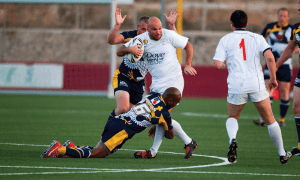
However, Spiteri was faced with a difficult challenge. Sponsorship for his project plan was threatened to be reduced if specific targets were not reached. Spiteri had knowledge and insight at the planning stage to moderate the negative effects of this cut. During planning he was able to set key performance indicators in areas of finance, training, competition and markets as part of the project design. The performance indicators allowed him to set targets to reach his ambitious goal. Rather than add a measure of control as an after-thought, he was able to integrate this as a whole concept. This meant that significant changes or shortcomings would be assessed against a measurement system, allowing a prompt response to take place with the significant action.
Plan for Death
Project control helps to ‘diagnose’ issues, plan for tackling weaker areas and adjust quickly to changes. It is normal for the team to assume that everything will work out well in the end but unpredictable behaviours, unfortunately, do happen. A lack of ownership can cause as many problems as unscheduled timing of events or project delays. A project plan gives the team the ability to envisage areas in which people conduct their activities and carry out their responsibilities. The more prepared the team is (in terms of knowledge and know-how of project plan), the quicker the recovery period. Planning is also useful as a tool when it is used to focus and highlight project needs to those involved. This is of particular importance when a project manager has to suggest different solutions to his or her client. Johann Farrugia was particularly good at providing a number of solutions for his concept of a digital cemetery when he had a major on-site problem with humidity.
“Information in cemeteries is handwritten meaning that some of the oldest records are today hardly legible. This is why cemeteries need an IT system to meet today’s needs”
Cemeteries are sacred, emotional spaces but also witnesses of human history. Information in cemeteries is handwritten meaning that some of the oldest records are today hardly legible. This is why cemeteries need an IT system to meet today’s needs. Farrugia identified the needs of all the different groups of people who make use of or work at a cemetery and figured out a system that allowed the public to request information easily. Through the website, staff and undertakers could access all the information they needed about gravesite location and burial details.
Farrugia faced problems with the testing system. Extreme humidity was interfering with the IT infrastructure limiting system usage. However, he integrated alternatives as part of his project planning phase thus being able to suggest solutions to his stakeholders and project investors. He was able to locate a secondary location system for supporting the project, thus eliminating completely the location of IT structures on-site. He also factored costings for any added insulation works required to counteract the problem and sought alternative zones that suffered from less humidity within the cemetery.
In this case, since the unexpected problem arose at an early stage, the project manager could be flexible in his planning, allow for change, and bring in alternate ideas to deal with these issues. Having considered the options beforehand meant that he could reduce the impact of a sudden major change.
In some cases, external events can trigger unexpected time delays. At times it can appear impossible to finish a project punctually, especially when there are delays in materials or suppliers. Sometimes a schedule should be consistent with your experience from previous projects. Your main focus should be on getting your critical requirements completed while avoiding distractions. The project management plan is critically dependent on the people who run it, design it, create it, and implement it. Moreover, increases in dependences increase time-frames.
Plan for Sustainability
Time-frames can quickly overrun when introducing sustainable measures into a residential development. Another student, Joslyn Magro, was keen to integrate into her project grey water reservoirs used to hold second class water for domestic use including lavatory use and landscaping photovoltaic panels, double glazing, and landscaping works. Sustainability has been an evolving theme to encourage environmental responsibility and promote intelligent decision- making with respect to energy use. Bad weather delayed the required materials that were being imported and this set the project back by a month.
By using a Gantt chart, Magro saw the negative effects of this delay. It would impact other installations and works. To reduce the burden, she scheduled architectural detailing and structural elements to run in parallel. This would reduce the dependency on strict delivery dates.
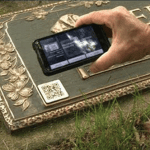
In her project plan she had also considered sourcing from different suppliers so she was able to negotiate costs affected by the delays. Once the materials were delivered on site, she could also introduce secondary teams of labourers to make up for the one-month back log. Costings saved during the delay, were used on a double-managed team unit. In her case, this may have proved to be the winning strategy as managing the on-site team as best as possible would help to counteract any further setbacks.
Taking advantage of constraints is the best way in project planning when possible. Projects revolve around expectations so it is better to envisage opportunity rather than to try control an event. Turning a shell apartment into a home might sound like a simple project in comparison to the ones discussed earlier but the problems would, theoretically, be very similar. Delays, supplier changes and exceeded budgets would surely impact your strategy along the way. Having strict milestones might be useful. It is not always necessary to consider worst-case scenarios but do consider carefully how much risk is actually acceptable. Most importantly, do not try to solve the problem, solve the cause.
This article covers some work of the first cohort of students enrolled in the M.Sc. in Project Management launched by the Department of Construction and Property Management, Faculty for the Built Environment, University of Malta. The diversity of projects reflects the range of situations in which project management skills are being applied.




